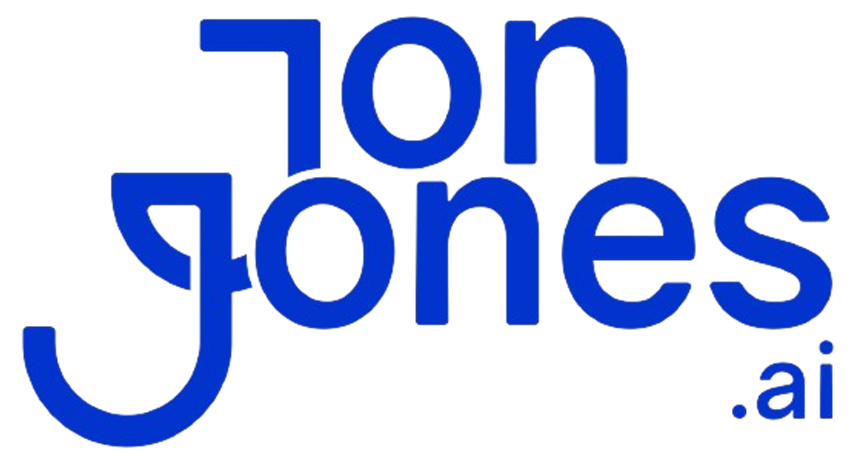You know that gut punch when a rival slashes prices out of the blue?
Your sales skid, and you’re left scrambling.
But with real-time AI (artificial intelligence)-powered analysis, you’ll turn loads of raw data into crystal-clear insights, like a hawk spotting its prey.
We’ve got five no-nonsense tips to supercharge your competitive market analysis with AI. You’ll see how to keep tabs on rivals, dig up hidden trends, and strike back before they even know you’re coming.
Ready to turn raw numbers into your next strategic win? Let’s dive in.
Real-Time AI-Powered Competitive Market Analysis for Strategic Advantage

Ever felt like the market moves faster than you can blink? With AI (artificial intelligence)–powered competitive market analysis, you’ll get instant updates on everything your rivals do.
We handle all the data collecting, sorting, and analyzing for you. Social media posts, news articles, company websites, you name it.
Then we turn raw numbers into clear insights, okay, let me rephrase, into actionable market intel you can use immediately.
A recent McKinsey survey found half of companies already use AI in at least one function. So real-time competitor monitoring isn’t just a nice-to-have anymore, it’s a must.
Our machine learning models (computer programs that learn patterns) track price shifts, product launches, and market-share moves as they happen. They spot hidden trends that manual research often misses.
- Instant market-share updates: see shifts right when a competitor changes prices or drops a new product.
- Automated pricing alerts: we’ll ping you the moment a rival tweaks their price tags.
- Scalable big data analysis: process millions of data points, from social feeds to news and websites, with no extra hires.
- Continuous sentiment tracking: sentiment analysis (detecting public mood) reveals swings in reviews and social chatter.
- Live, data-driven insights: dashboards refresh with real-time metrics so you can spot growth pockets or risks fast.
Combine real-time AI analysis with tools for predictive analytics. You’re no longer stuck reacting, you’re making proactive moves before competitors even know what hit them. Imagine spotting opportunities, tweaking your campaigns, and updating prices all in minutes.
Plug these insights into your dashboard or set up custom alerts so everyone on your team stays in sync. You’ll save countless manual hours and turn intelligence into measurable wins.
Results matter.
AI Techniques for Competitive Market Analysis

We use natural language processing (NLP) to turn free-text reviews, news articles, and press releases into searchable tags. NLP means teaching computers to understand human writing, and we lean on transformer models (like BERT, a tool that groups similar text). In one run, it clustered 82% of feature requests under “mobile UX” in just hours, so you see exactly where your rival needs to invest.
Next, we tap time-series forecasting to predict price dips and sales surges. Time-series forecasting means using past data to guess future trends, and we use Prophet (Facebook’s forecasting tool). By feeding it 24 months of SKU price data, we predicted a 5% price drop two weeks early, so you can undercut their next move.
Then we build a sentiment-tracking dashboard in Python to catch shifts in customer mood. A cron job pulls hourly tweets, TextBlob (a simple text polarity tool) rates each message, and Plotly charts the results. Watch for red spikes, those are moments when your competitor’s customers start to sour.
We also run unsupervised anomaly detection to spot unusual patterns in massive datasets. This means using an isolation forest (an algorithm that flags outliers) to find odd shifts. In one case, it flagged an 80% drop in review length for a competitor, hinting at possible review tampering or bot activity.
Comparing Top AI Tools for Competitive Market Analysis

Ever feel swamped by all the AI (artificial intelligence) options for tracking your competitors? We’ve lined up six tools that save you the guesswork. Scan the table to see features, costs, and limits at a glance.
| Tool | Highlights | Cost | Best For | Drawbacks |
|---|---|---|---|---|
| ClickUp Brain | Supports multiple languages, hooks into 1,000+ apps, auto-generates reports | Free plan; paid starts at $5/user a month | Building all-in-one dashboards and competitor benchmarks | Free version has basic stats; need paid tier for deep insights |
| Kompyte | Real-time competitor tracking, price-change alerts, web and social scans | $99/month subscription | Watching market shifts and dynamic pricing | Occasional data lag; limited history in low tiers |
| Crayon | Win/loss analysis, sales Battlecards, custom alerts | Plans from $49/user a month | Equipping sales teams with competitive intel | Steep learning curve; some training needed |
| ChatGPT | Ask in plain English, historical insights, flexible prompts | Free basic; Plus at $20/month | Quick ad-hoc analysis and summary drafts | Integration gaps; occasional errors in facts |
| Elicit | Summaries from 200M+ papers, 5,000 free credits, citation tracing | Free starter; paid from $30/month | Deep-dive research on industry and academic trends | Not tailored for product or pricing analysis |
| Obviously AI | Drag-and-drop predictive analytics, no-code interface | Starts at $999/month | Sales forecasting and pricing models | High price; narrower feature set |
Picking a platform boils down to your budget, your data sources, and how you want to use AI. Will you chase price alerts, build multi-source dashboards, or dive into industry research?
Here’s a quick guide:
- ClickUp Brain: Plug-and-play integrations and language support.
- Kompyte: Instant price-change alerts.
- Crayon: Sales-ready Battlecards.
- ChatGPT: Chat in plain English for quick competitor rundowns.
- Elicit: Deep-dive research from academic and industry papers.
- Obviously AI: Drag-and-drop predictive analytics (tech that forecasts trends), just mind the cost.
Real-World Use Cases of AI-Driven Competitive Market Analysis

Ever felt swamped by endless data? We did, too. Here are three real-world stories of teams using AI-powered competitive intelligence (algorithms that gather and analyze market trends) to turn raw info into fast action.
-
A scrappy startup pasted its product URL into Competely and, in just 10 minutes, mapped five top rivals. That quick competitor map helped the team rank which features mattered most and speed up their AI-driven go-to-market plan. They launched with confidence instead of guesswork.
-
An online shop tapped Kompyte’s price-monitoring engine to track shifting prices in real time. Automated alerts filled their dashboard, guiding them to repricing decisions that lifted profit margins by 3%. They traded spreadsheet marathons for pricing power.
-
A mid-sized software team equipped its sales reps with Crayon’s Battlecards (AI tools that analyze win/loss data and audience trends) to spot feature gaps, craft sharper messages, and handle objections like pros. Those instant insights fueled a 15% bump in close rates over just two quarters.
When you mix smart algorithms with real-world context, you’re not just crunching numbers. You’re predicting your competitors’ next move. Even small teams can tap big-data competitive intelligence to outpace rivals and win buyers first.
5 AI-powered competitive market analysis Tips for Success

Ever felt swamped by raw market data? We do sometimes. Got it. So, let’s break down five steps to turn AI (artificial intelligence) work into clear, revenue-driving insights you can actually use.
Define Objectives and KPIs
First, pin down what success looks like. Pick targets like cutting manual research time by 70% or raising win rates by 10%. These key performance indicators (KPIs) keep you focused on real results, not just running fancy algorithms.
Data Collection and Quality Assurance
Next, build a solid data pipeline (the path your data travels from source to analysis). Pull in info from social media, news sites, and your CRM. Clean and normalize each field so you don’t end up with garbage in, garbage out. Then do quick spot checks now and then to catch glitches.
Model Selection and Customization
Now choose the right machine learning model (a program that learns patterns). For structured pricing data, try a tree-based model. For text-heavy feeds, go with neural networks (computer models inspired by the brain). Tune parameters to watch specific competitors, keywords, or regions. And hey, run a few “what-if” pricing or feature tests to see how changes play out.
Dashboard Integration and Reporting
Link your AI results to business intelligence (BI) dashboards and your CRM. This way, sales and marketing get real-time alerts right where they work, Slack, email, you name it. Automated snapshots mean less hunting for insights and more time acting on them.
Ongoing Maintenance and Training
AI isn’t a set-it-and-forget-it tool. Schedule model retraining every quarter, or sooner if things shift. Teach your team how to read the outputs, spot false positives, and add that essential human touch. A simple governance plan and clear user guide will keep data privacy and audit trails in check.
Follow these five steps and watch your competitive analysis program go from spreadsheet hell to a smooth, scalable ride, fast, reliable market signals guaranteed.
Measuring ROI of AI-Powered Competitive Market Analysis

Let’s talk about how you can measure the ROI (return on investment) of an AI (artificial intelligence)–powered competitive market analysis tool. First off, think about the time you’ll save. Tasks that once took days of manual scraping get done in minutes.
Next, we look at revenue impact. For example, a 15% bump in win rates or a 3% boost in profit margins from smarter pricing. Then add up your subscription fees, sometimes as high as $999 a month for predictive platforms (software that forecasts market trends), plus any integration overhead (extra work to connect systems).
We also link these numbers to an interactive dashboard so you can watch efficiency gains and financial wins in real time. And if ROI starts to slip below your target, our AI-driven risk assessment flags it before you overspend. Nice.
Finally, we pair that with AI-based market share assessment to make sure you’re really moving the needle against competitors.
Here’s how we break it down:
- Time Saved
Compare hours spent on manual data gathering against minutes used by AI pipelines. - Revenue Uplift
Track percentage increases in win rates or margin gains tied directly to AI-driven pricing moves. - Cost of Ownership
Total up subscription fees, integration costs, and any extra maintenance expenses. - Error Reduction
Measure decreases in manual-entry mistakes and data inconsistencies after AI automation.
Investing in real-world competitive intelligence tools shows that the time saved and revenue lifts usually outweigh the costs. You’ll see why case studies report 20–30% revenue growth in just a few months.
Best Practices and Pitfalls in AI-Driven Competitive Market Analysis

AI-driven competitive market analysis uses artificial intelligence (AI, computer systems that learn patterns) to sort through massive data sets fast. But when we mix that with human know-how, we catch the context AI misses, avoid bias, and keep our team on the same page.
It’s easy to slip up though. Stale models, siloed tools, and hidden bias can derail your insights. So let’s dive into best practices, and watch out for common pitfalls, in market analysis automation.
-
Blend AI outputs with cross-functional teams
First, loop in your sales, marketing, and product folks to review AI results before you act. If you rely only on automation, you lose real-world context and miss key market signals. -
Enforce data governance, privacy policies, and GDPR considerations for AI research
Set clear rules for how you collect, store, and share data. Skipping data privacy checks, like GDPR (General Data Protection Regulation) audits, can lead to legal fines and brand damage. -
Document algorithms and results for model explainability
Keep a log of your model logic, training data, and performance metrics. When your models feel like black boxes, audits get tense and stakeholder trust falls apart. -
Schedule regular model retraining and validation
Treat your machine learning models (programs that improve over time) like living systems. Retrain and test them regularly with fresh data, or else they’ll serve up outdated insights that misguide your pricing and positioning. -
Integrate systems to avoid siloed implementation
Connect your AI tools to your CRM (customer relationship management), BI dashboards, and collaboration apps. When tools sit alone, knowledge stays stuck and biases grow under the radar.
When we pair ethical automation with human judgment and clear policies, our competitive analysis stays accurate and on track. Follow these tips and you’ll build a transparent, compliant, and effective AI program that keeps pace as your market evolves.
Final Words
In the action, we dived into real-time AI-powered competitive market analysis and saw how ML, NLP, and predictive models keep you ahead.
We compared leading tools like ClickUp Brain and Kompyte, walked through case studies that boosted margins, and mapped a clear five-step setup.
We ran through ROI metrics in saved hours and extra revenue, and flagged explainability and data privacy pitfalls.
You’re now ready to apply AI-powered competitive market analysis, and watch your growth take off.
FAQ
How can AI be used for competitive analysis?
AI can analyze large datasets to track rivals’ pricing, product launches, and marketing moves in real time. It spots trends, patterns, and emerging threats faster than manual research, helping you adapt strategy quickly.
Can AI do a market analysis?
AI can perform market analysis by processing customer feedback, sales figures, and news feeds to reveal demand shifts and growth opportunities. It uses predictive models (an algorithm that forecasts outcomes) to suggest the best next steps.
Can ChatGPT do a competitor analysis?
ChatGPT can perform competitor analysis by summarizing rivals’ strengths, weaknesses, and market positions from public data. It drafts comparison reports, suggests content angles, and highlights gaps, acting like a virtual research assistant.
What is generative AI competitor analysis?
Generative AI competitor analysis uses models that produce new content, like market summaries or strategy drafts, based on competitor data. It combines data collection, pattern recognition, and natural-language generation for actionable insights.
What free AI tools are available for competitor analysis?
Free AI tools for competitor analysis include Google Trends for interest tracking, ChatGPT with a basic plan for content summaries, and open-source packages like spaCy for text analysis. Bizway offers a limited free tier.
What features should I look for in a competitor analysis AI tool?
Essential features include real-time data feeds, automated report generation, price-change alerts, sentiment analysis, and integrations with CRM or BI platforms. Look for customizable dashboards and API access to fit your workflows.
How can AI help with social media competitor analysis?
AI helps with social media competitor analysis by scanning mentions, hashtags, and engagement metrics to compare performance. It identifies top-performing content, sentiment trends, and audience demographics to refine your own social strategy.
How does AI assist with competitor ad analysis?
AI assists with competitor ad analysis by collecting ads from platforms, extracting creatives, and measuring reach and engagement. It spots high-performing headlines, keywords, and budgets so you can optimize your own campaigns.
What insights can AI-powered competitor analysis provide?
AI-powered competitor analysis provides insights like pricing trends, market share shifts, customer sentiment, product feature comparisons, and promotional tactics. These insights help you spot opportunities and adapt your strategy for competitive advantage.
What is a competitor analysis AI agent?
A competitor analysis AI agent autonomously gathers data on rivals, runs analytics, and alerts you about critical changes. It acts like a dedicated team member focused on monitoring competitors and surfacing actionable findings.






